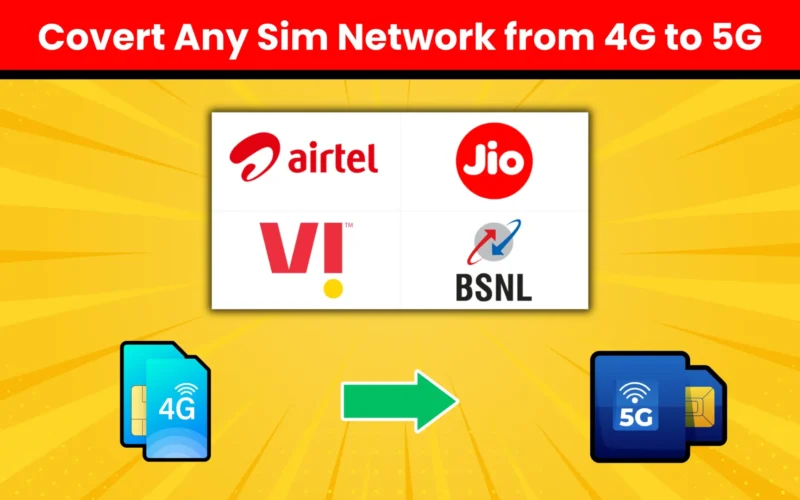In our rapidly evolving digital landscape, the shift from 4G to 5G marks a pivotal moment, promising unparalleled advancements in speed, reliability, and connectivity. This comprehensive guide serves as your compass through this transition, offering insights into the benefits, challenges, and practical steps involved in embracing the fifth generation of wireless technology.
Embracing the Evolution of Wireless Technology
As the world embraces 5G, wireless communication undergoes a profound transformation. Unlike its predecessor, 4G, which primarily focused on faster internet speeds for mobile devices, 5G aims to revolutionize connectivity across various industries, spanning healthcare, transportation, manufacturing, and entertainment.
Understanding the Core Differences
The transition from 4G to 5G represents a significant leap in wireless technology. While 4G relied on traditional cellular towers and infrastructure, 5G introduces innovative technologies like millimeter-wave spectrum, massive MIMO (Multiple Input Multiple Output), and network slicing to deliver faster speeds, lower latency, and greater network capacity.
Benefits of Upgrading to 5G
The shift to 5G offers a multitude of benefits, including:
- Blazing Fast Speeds: With download speeds potentially up to 100 times faster than 4G, 5G enables seamless streaming, gaming, and downloading of large files in a fraction of the time.
- Ultra-Low Latency: 5G’s reduced latency, often in the range of 1 millisecond or less, facilitates real-time interactions, making applications like augmented reality (AR), virtual reality (VR), and autonomous vehicles more responsive and immersive.
- Enhanced Connectivity: 5G networks can support a significantly higher number of connected devices per square kilometer, paving the way for the Internet of Things (IoT) revolution and enabling smart cities, smart homes, and interconnected infrastructure.
Navigating the Transition from 4G to 5G
While the benefits of 5G are clear, the transition from 4G to 5G comes with its share of challenges. From infrastructure upgrades to spectrum allocation, various factors must be considered to ensure a smooth and successful transition.
Infrastructure Upgrades
Upgrading existing infrastructure to support 5G is a primary challenge. This includes deploying new base stations, upgrading backhaul networks, and optimizing antenna placement to maximize coverage and capacity.
Spectrum Allocation
Another critical aspect is spectrum allocation. Unlike 4G, which primarily operates in lower frequency bands, 5G utilizes a wide range of frequencies. Allocating sufficient spectrum for 5G networks is essential to ensure optimal performance and capacity.
Device Compatibility
Transitioning to 5G requires upgrading to compatible devices. While many new smartphones and tablets are already 5G-enabled, older devices may not support the new technology. Additionally, other connected devices, such as IoT sensors and smart appliances, may require upgrades or replacements.
Practical Steps for Transitioning to 5G
Despite challenges, transitioning from 4G to 5G is feasible with careful planning. Here are some practical steps to facilitate the transition:
Assess Current Infrastructure
Conduct a comprehensive assessment of existing infrastructure, including base stations, antennas, and backhaul networks. Identify areas that require upgrades or optimization to support 5G technology.
Spectrum Planning and Acquisition
Secure necessary spectrum licenses for 5G deployment. Leverage a mix of low-band, mid-band, and high-band spectrum to achieve optimal coverage, capacity, and performance.
Device Procurement and Deployment
Upgrade devices to 5G-compatible models, ensuring compatibility with existing systems and applications. Deploy devices strategically to maximize coverage and connectivity.
Employee Training and Education
Provide training on the benefits and capabilities of 5G technology. Encourage exploration of innovative use cases and applications to enhance productivity and efficiency.
Conclusion
The transition from 4G to 5G heralds a new era of wireless technology. By understanding the benefits, challenges, and practical steps involved, organizations can position themselves at the forefront of this digital revolution, unlocking new opportunities for growth and innovation.
FAQs
1. Will transitioning to 5G require significant infrastructure investments?
A. While investments in infrastructure upgrades and spectrum allocation are needed, the long-term benefits outweigh the initial costs. Various financing options and partnerships can mitigate the financial impact.
2. How will transitioning to 5G impact existing 4G networks?
A. Existing 4G networks will coexist with 5G networks, providing coverage in areas where 5G may not be available or practical.
3. What are potential use cases for 5G beyond smartphones?
A. 5G has the potential to revolutionize industries like healthcare, transportation, manufacturing, and entertainment, enabling applications like remote surgery, autonomous vehicles, and immersive experiences.
4. How secure is 5G compared to 4G?
A. 5G offers enhanced security features, but robust cybersecurity measures are essential to protect against threats.
5. How soon can we expect widespread adoption of 5G?
A. Widespread adoption is already underway, but the pace may vary based on regulatory environment, infrastructure readiness, and consumer demand.








